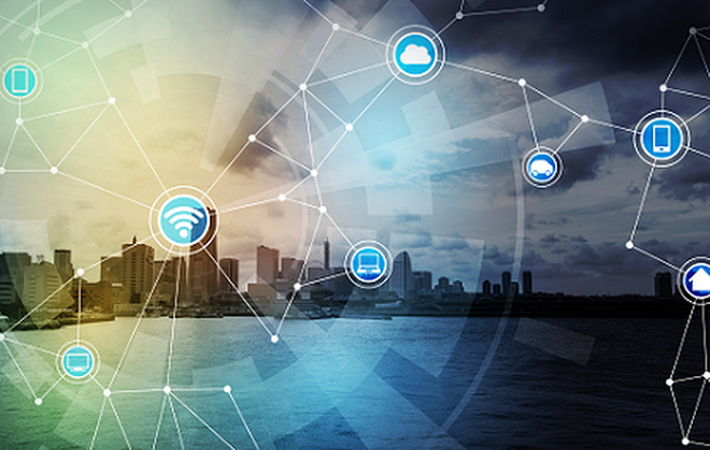
Published on 08/08/2016 | Technology
In this post, we’ll explore how businesses can leverage their existing infrastructure to create scalable IoT deployments.
The massive scale and reach of IoT solutions for businesses requires some additional considerations, namely:
Data Deluge: Instrumenting an entire factory or numerous parking spaces will generate large amounts of data. The 2-tier model where all sensor data flows to the cloud for processing will not scale as costs tend to rise dramatically. Note again that these costs do not include the transmission cost over pricey cellular networks – making things even more expensive.
Business Continuity: If core business functions are dependent on the cloud – losing cloud connectivity will (thus) severely affect business functions. Consider the case of smart parking where cloud connectivity failure or degradation could cause parking mayhem in a city. This requires basic parking services to continue to function independent of access to the cloud.
Real-time Decision Making: Some IoT scenarios (e.g. boiler temperature crossing a critical threshold) can’t wait for the latencies associated with transmitting data to the cloud. Even more serious are situations where critical decisions need to be made within a very small time frame (e.g. inclement weather causing internet reliability issues while there is a transformer failure that could take the whole electrical grid down).
Useful vs. Less Useful Data: The old adage that value lies in the data needs a slight modification in an “IoT age” that produces unending streams of data, much of which is redundant and perhaps of not much immediate use. The real value lies in knowing the difference between useful (i.e. actionable) and less useful data. It requires having a decision table to filter the actionable data that can then be acted upon, analyzed, stored, etc.
Securing End Devices: In general, sensors/actuators are constrained devices that lack the security mechanisms of more robust systems. Bringing them online without adequate protection is a recipe for disaster. However, it’s not easy to harden these fixed-function devices without significantly changing their footprint (cost, power envelope, real estate).
Connecting Legacy Devices: Some industries and settings (e.g. oil rigs, factories, office buildings) have been instrumented over the last several decades. Any IoT solution will need to connect with these devices. The existing sensors, actuators, and other devices often use fieldbus protocols (e.g. Modbus, Profibus, BACnet) that may not easily connect with back-end systems. It may be economically infeasible to replace or upgrade these legacy devices without causing business disruption.
Integration with Existing Infrastructure: IoT data will need to integrate with existing systems, databases, applications, and services across a heterogeneous IT infrastructure. This requires capabilities to transform and route IoT data as and when needed by various systems.
One of the ways to solve the challenges mentioned above is by adding another layer to the architecture between the end-devices (sensors, actuators and other embedded systems) and the back-end. This approach with a 3-tier IoT architecture moves data processing and decision making closer to the data source. The middle tier helps to bring intelligence to the edge and acts as a gateway between the other two tiers. The implementation of this middle-tier can be provided by a system called an “intelligent IoT gateway”.
The intelligent IoT gateway is an important component of industrial IoT as it can process data near its source in near real time and filter/prioritize the actionable data. In addition, business-critical functions can continue even in the loss of internet/cloud connectivity through the use of an intelligent IoT gateway. The device traffic can be separated for each segment, lowering the network bandwidth requirements and costs. The intelligent IoT gateway can act as a bridge to the legacy devices through fieldbus protocol adapters, thus bridging the operations technology (OT) and information technology (IT) worlds. This allows IoT data to be integrated with existing IT systems and enables companies to better leverage their existing IT infrastructure.
The intelligent IoT gateway also serves to aggregate the data from end devices – this includes collecting, transforming, summarizing the data stream into useful chunks. Instead of all the sensor data, a small subset of data and more importantly, the ‘actionable data’ is sent to the cloud. The data can also be prioritized and routed to when and where it’s needed (e.g. critical alerts can be prioritized and routed to a different endpoint than the rest of the data). The additional value-added services (e.g. the smart parking use case with demand based pricing, video analytics, and guided parking) can then be provided through cloud infrastructure. Being close to the data source, the intelligent IoT gateway can process information in near real time and do away with the latencies associated with the cloud – a key requirement for critical use cases.
The middle-tier also serves to secure the downstream devices (sensors, actuators, and other embedded systems) from the security risks posed by the public internet. This middle-tier firewall protects the downstream devices by leveraging the security best practices like SELinux and containers. The software stack on these intelligent IoT gateways can be maintained, patched, and upgraded years after the initial deployment. Best of all, these systems can be provisioned at scale using existing IT infrastructure.
The intelligent IoT gateway is a key requirement for industrial IoT as it bridges the end devices and back-end systems (whether on-premises or cloud). By bringing intelligence closer to the data source, the actionable data can be acted on in near real time (a must for life-preserving safety systems). The business-critical needs can continue to function during the loss of internet/cloud connectivity. Network bandwidth is conserved as the data is summarized/aggregated before sending it to the back-end. The middle-tier provides a firewall to protect the end devices from the threats associated with being online. Finally, businesses can better leverage their existing OT and IT infrastructure through the intelligent IoT gateway. This provides businesses more control over their IoT deployments.